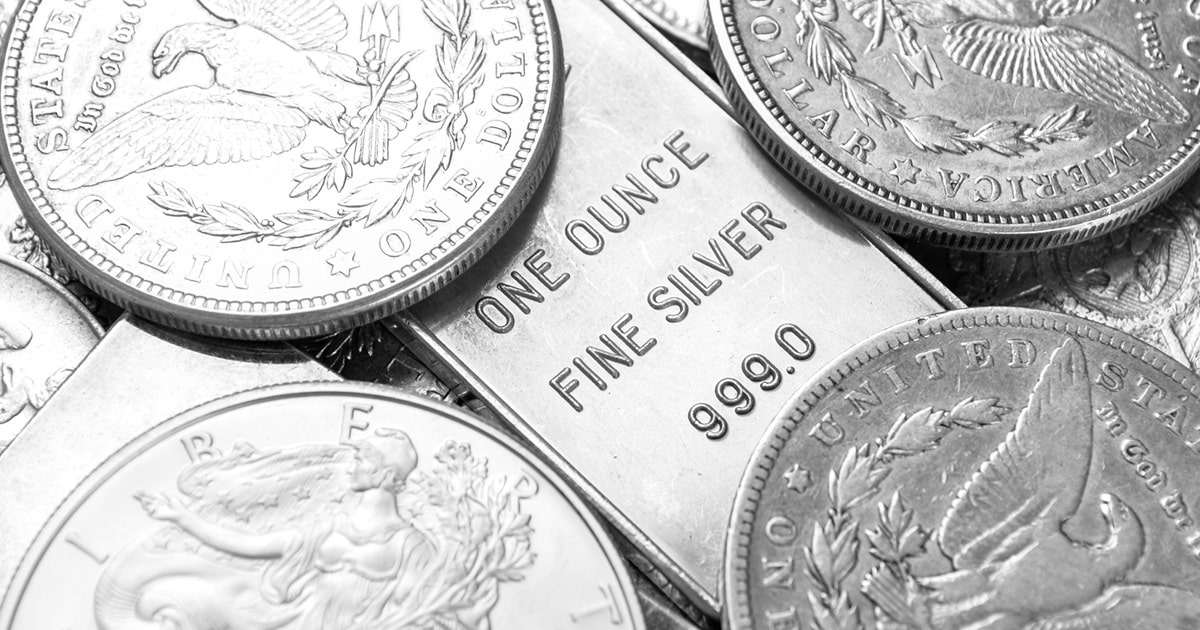
Learn About the Argument for (and Against) Silver at $1000
Update: This article has been updated in May of 2024 to account for current events and new price information.
Silver has generally been viewed as a more affordable precious metal to invest in than the more expensive gold. Right now with the price of silver being over $31, you can buy over 75 ounces of physical silver for the price of one ounce of gold.
However, in 2016 a debate was sparked after an interview with the CEO of a major silver mining company was published. He voiced the opinion that he could see the price of silver rise to $1,000 per ounce if the gold spot price ever rose to $10,000 per ounce. This was met with much skepticism, and since then, that has clearly not been the case, but this article will break down his claim and its likelihood.
The Case for Silver at $1000 an Ounce
An essential point emphasized is the difference in production and pricing between gold and silver. At that moment, the silver output was about nine times that of gold. As a result, the claim was made that silver should currently be trading at around $130 per ounce, or approximately 1/9 the price of gold. That would suggest we should be trading at nine to one, which would put gold at $2,016 and silver at $224 an ounce.
At the time of the CEO’s prediction in 2016, silver and gold were trading at a ratio of 75 to one. This ratio, coupled with the CEO’s projection, seemed unlikely to materialize. Fast forward to today, the current silver to gold ratio stands at about 80:1. The lowest the ratio has dipped since the initial forecast was just under 65:1.
Why $1000 per Ounce Silver is Unlikely to Occur
The price of silver is currently just over $30 per ounce. At its peak, silver was trading around $50 per ounce, so it would have to rise by 2/3 to reach the $50 mark. It would need to increase about 32x to reach $1,000 an ounce from today’s numbers.
The claim that a 9:1 ratio should be used to peg silver to the price of gold considers supply but does not account for demand. It also does not account for the elasticity of supply and demand and the differences between gold and silver. It’s important to note that as the price of gold increases, demand and supply will adjust, and silver will do the same but at different rates. This means the price will be adjusted differently. A 9:1 ratio has never been the standard for the gold-to-silver ratio, and we don’t expect that to change.
In short, it is implausible that the price of silver will reach $1,000 per ounce. Silver is used more industrially than gold, and its price does not react the same way to economic events. While silver’s price can react dramatically to changes in the economy, it is unlikely that silver will reach $1,000 per ounce, though we do not discount the possibility of triple-digit silver in the coming years.
How Silver Typically Performs
The silver spot price is generally stable compared to other asset classes, though it varies more than gold. Over the past few years, silver has seen an increase in price. Silver usually performs poorly when economies are performing poorly, and this is because silver has heavy industrial use. Investors become more wary of silver when recession risks are looming due to historical performance.
Under a dollar cost-averaging strategy, silver tends to outperform gold. Over the long run, gold tends to average just over a 3% return on investment, while silver tends to perform a little over 7% return. To get to $1000 an ounce, these historical norms would need to be disrupted by serious black swan events that would have global ramifications. A sudden jump would mean an increase in returns to 4,000%. There is some historical precedent for an increase like this, where we saw a 37x increase in the price of silver leading up to 1980’s historical high, but to get this, you have to cherry-pick the lowest price in the 70s and the highest price in 1980. The odds of an investor winning big by buying at the lowest point in a ten-year stretch and timing it perfectly to sell at the highest point are low.
The silver price per ounce can fluctuate based on geopolitical events worldwide. A notable and recent example was the Covid-19 pandemic. When the pandemic first became well-known in February and March of 2020, the price of silver plummeted from $18 per ounce at the start of the year to under $12 per ounce in March. It recovered and went to over $30 an ounce with extremely high demand for physical metals and currently trades around $31 per ounce as of May of 2024. Factors like the banking crisis in March of 2023 or the war in Ukraine can affect the price of gold and silver.
Key Takeaways
Even if silver is highly unlikely to reach the $1,000 mark, there are still reasons to buy silver today. Silver is a more affordable precious metal than gold, and while it tends to be more volatile, it also yields higher returns than gold. It might not be silver’s time to reach $1,000, but it is still a valuable precious metal worth investing in. With bullish trends developing for its industrial use cases and historic demand for silver bars and coins sustaining for multiple years in a row, it’s likely that silver will continue to provide real returns and a safety net for investors for years to come.




